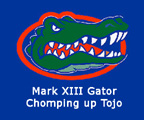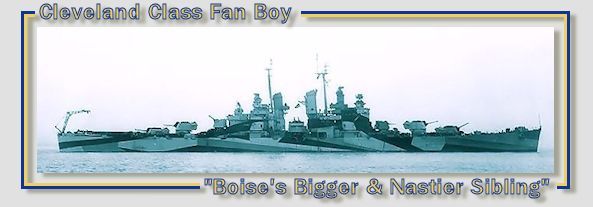wneumann
Posts: 3768
Joined: 11/1/2005
From: just beyond the outskirts of Margaritaville
Status: offline

|
Looking at the big picture... The Allies are strategically on the defensive, and will be for some time. In some respects, the strategic situation (in general) is not dissimilar to what the USSR faced six months earlier in 1941 when Adolf launched his panzers across the border. The common threads between this game, and the USSR in 1941...
a) The allies will be punched early and often.
b) The allies are going to have to roll with said punches.
c) At some point in the future, the allies will be able to stop the enemy's advance and then hit back on a large scale (exactly when and where is probably the most crucial judgment call).
d) This is a war of attrition.
Getting back to the Allied position in the Pacific at this stage... This is what I'm viewing as the most immediate problems and short-term strategy.
1) Delay the Japanese advance as long as possible at the lowest possible cost (from a long-term perspective). This is something that is possible only on a very small and localized scale. The units to be employed in delaying the Japanese will largely include those that are going to be lost anyway. The general purpose behind delaying tactics will be to inflict casualties (however small) and gain time (however little) for their compatriots to escape or prepare a stand elsewhere. It will be the policy in doing this that units employed in delaying the Japanese will be positioned in the best possible location and provided with the best possible supply and resources as the situation permits.
China: Withdraw troops from positions that form a salient into Japanese-occupied territory. Salient positions will be gradually dissolved - units in excess of those required to occupy the front lines will be withdrawn first, once this is accomplished the remaining front line units will begin pulling back. This will shorten the overall front line and allow concentration of units in locations where needed.
Malaya: As of 12/08/41, nearly all air units located in Malaya have "already left the country". Ground units in northern Malaya other than those holding the front at Kota Bharu have started withdrawing to the south and west, non-combat units being ordered back to Singapore. All merchant shipping and naval ships are or already have left port, most of them to ports in the DEI where they will refuel (depleting the fuel stocks in these ports) before proceeding to Ceylon.
Burma: Rangoon has been the primary destination for many of the air units leaving left Malaya - these air units will continue on to India over the next several days. Plans to remove oil and resources stockpiled in Rangoon are underway, shipping to evacuate this stockpile has already been dispached from ports in India. A minimal "crust" of ground units is being maintained along the Burma-Siam border to detect and slow down a Japanese advance overland, ground units in excess of this requirement are already moving to the west. To the north, Chinese divisions have been dispached toward Lashio to delay the Japanese there and also "plug up" the China-Burma border area.
India: All ground units not required to defend specific localities are moving to the east. All U.S. merchant shipping in Indian ports not being used for other purposes is being collected with the intent of transferring them to Australia, these ships will be used in Australia to start the "pool" of transport shipping needed for the South and SW Pacific commands.
Hong Kong: Everybody's leaving town (or at least those who can). Good luck! Just so happens there are two minelaying ships in Hong Kong - I'm having them dump their cargo (of mines) in Canton harbor, hopefully before they get sunk. Likewise, there are some MTB's that can maybe cause mischief before their eventual demise.
Phillipines: Except for those holding the front lines, all other ground units and HQ on Luzon (with one exception) are headed for Bataan. One USAAF base unit (I believe the 20th) along with several (P-40) fighter units were transferred to SW Pacific and have left Manila aboard much of the available merchant shipping. If they make it, fine. Otherwise I'm gonna lose them anyway. All SS available in Manila are being employed as submarine transports, along with several cargo ships are loading up with supply for transfer to Bataan. One damaged French AK is in port at Napa, loading as many resource points as possible before the Japs come back and sink it. Likewise, there is a TK doing the same with a fuel cargo. Many of the B-17's that could do so have flown out to the south for transfer to SW Pacific. The 5th USAAF base unit in Mindinao has also been re-assigned to SW Pacific and elements of this unit have already departed to the south. Additional evacuations from the Phillipines will be considered and done as time and the situation allows. All naval and merchant ships not employed for other purposes have left port and heading to the south.
DEI: The Japanese are coming. The question is how soon and where. The majority of Dutch ground units will have to hold and die where they stand, though a number will be re-assigned to other commands and evacuated to Australia as possible. Priority for evacuation of land units will be given to air and naval base support units - it is unlikely that any ground combat units will be evacuated due to their size and the probable time frame under which any evacuation will be possible. Evacuated base support units will be re-assigned to South or SW Pacific to form the basis and augment logistical support for these commands when they come online. As many Dutch air units as possible will be re-assigned and evacuated. Priority for air units will be given to recon (Do-24) and transports, bombers will be next. The remainder will be moved to locations where they can best assist the defense before they are destroyed. As much as possible of the oil and resource point stockpiles in the DEI, along with excess fuel and supplies, are being loaded up on merchant shipping for removal. Much of this will reach Australia for our later use, anything of this aboard ships the Japanese sink is considered "scorched earth".
Australia: Ground combat units are moving overland to cover possible Japanese invasion sites. A small amount of merchant shipping has been dispached to assist evacuation of the DEI. Darwin is not being counted on as a safe haven for most ships leaving the Phillipines or DEI. It appears the most feasible de-embarkation port for many evacuated units reaching Australia is actually Perth - this port has better land communications with the rest of Australia. Also, many of the units evacuated to Australia cannot profitably be re-deployed immediately, so where they "land" is not particularly crucial in the short term.
New Guinea, Coral Sea, Solomons: There is a small amount of merchant shipping here, all this is leaving the region via Rabaul where they are picking up bits and pieces of an Australian unit for evacuation to Down Under. Several Allied CA and CL are also present about the region - these are being individually sent to various locations to disrupt Japanese landings where it is possible to do so. These warships are operating under orders to initiate surface combat only against unescorted Japanese amphibious TF - contact to be avoided if warships are present in these TF, or if land or carrier-based aircraft are in the area.
Hawaii: We didn't get off too bad at Pearl - two BB (Nevada and Oklahoma) sunk, moderate levels of damage to the other BB. Nothing to be done about the Japanese CV, the good news may be that they had many aircraft damaged due to flak over PH. I will be devoting air resources to track (but not attack) the Japanese CV. US carrier TF will be avoiding contact and heading back to PH or the west coast to re-organize. What can be dealt with now is the large number of Japanese SS hanging around Oahu. Every US ship capable of ASW is being formed up into ASW TF's - these TF's will "hover" to the south of Oahu with the intent of sinking or damaging as many Japanese SS as possible as long as they care to remain in the area. Available bomber aircraft based in Hawaii have been placed on ASW missions as well.
U.S. West Coast: John Belushi is driving a tank through the streets of Los Angeles to deliver a devastating attack upon a Jaoanese SS that is shelling a local amusement park. Otherwise, war hysteria as usual.
Alaska. It's cold up there. Yamamoto would freeze his patooties off.
|
 Printable Version
Printable Version














 ). I use the Dutch transport aircraft to either: move supplies from Palembang to Singapore or transport LCU out of Singapore. Usually, the Japanese player will leave this alone for a while. Be careful about what LCU's you leave in Ragoon as any left there to defend have no escape route.
). I use the Dutch transport aircraft to either: move supplies from Palembang to Singapore or transport LCU out of Singapore. Usually, the Japanese player will leave this alone for a while. Be careful about what LCU's you leave in Ragoon as any left there to defend have no escape route.  Most player withdraw the CD and the BF to Andmann Island to make the Japanese send more that a Brigade to take it. Also, you need it move your short legged air units from Singapore to India.
Most player withdraw the CD and the BF to Andmann Island to make the Japanese send more that a Brigade to take it. Also, you need it move your short legged air units from Singapore to India.



 New Messages
New Messages No New Messages
No New Messages Hot Topic w/ New Messages
Hot Topic w/ New Messages Hot Topic w/o New Messages
Hot Topic w/o New Messages Locked w/ New Messages
Locked w/ New Messages Locked w/o New Messages
Locked w/o New Messages Post New Thread
Post New Thread